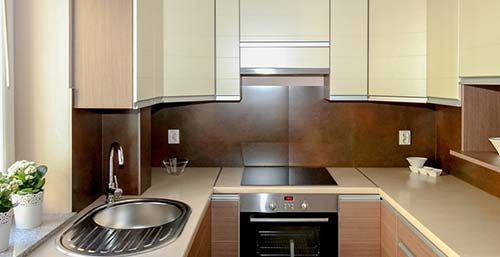Earlier this week, workplace health and safety ministers of the Commonwealth, states, and territories held a meeting and reached an agreement to explore options for banning engineered (artificial) stone that contains respirable crystalline silica (RCS) due to the increasing prevalence of silicosis and other silica-related diseases.
Dry-cutting silica products, which are frequently used in the construction sector to manufacture kitchen and bathroom benchtops, bricks, tiles, and certain plastics, have been linked to a surge in silicosis cases, leading to it being referred to as the "asbestos of the 2020s.”
A final decision is expected in the latter half of 2023, with a ban to come into effect 12 months later.
About crystalline silica and its harmful effects
Crystalline silica is a mineral that is frequently found in construction materials, including bricks, concrete, sandstone, granite, mortar and tiles. When these materials are cut, ground, or drilled, they generate fine dust particles that are often too small to be seen but contain RCS. Inhaling this dust can cause a range of fatal diseases, such as lung cancer and silicosis.
In Australia, there has been a significant rise in silicosis claims, especially among young stonemasons, due to an increased use of engineered stone products as a less expensive substitute for granite and marble. Between 2010-11 and 2020-21, SafeWork Australia reported 488 approved workers' compensation claims for silicosis in the jurisdictions covered by the model WHS laws.

Engineered stone has become a popular choice for kitchens and bathrooms due to its appearance, low cost and durability.
RCS exposure standards
Under the WHS Regulations, employers or the 'person conducting a business or undertaking' (PCBU) has a primary duty of care to ensure the health and safety of workers while they are at work in the business or undertaking and others who may be affected by the carrying out of work, such as visitors. Safe Work Australia advises the current workplace exposure standard set for RCS is 0.05 mg/m3 (eight-hour time weighted average). More information is displayed in the table below on reporting limits.
If employers are uncertain whether their employees are exposed to levels of silica dust above the standard or whether there is a risk to their workers’ health, it is important that regular air monitoring is conducted to ensure the exposure standard is not being exceeded or to determine whether if there is a risk to a worker's health.
Silica dust monitoring with an accredited laboratory
To ensure compliance with exposure standards, it is crucial to conduct comprehensive workplace monitoring to assess the crystalline silica content of dust. MPL Laboratories, a reputable, independent testing laboratory with over 20 years of experience in airborne CONTAM monitoring and analysis, is NATA Accredited for Respirable Dust (AS 2985) and Crystalline Silica by re-deposition and FTIR (NIOSH 7603), making it a leading authority in this field.
In addition to our wide-ranging services, we leverage extensive experience and expertise in Occupational Hygiene to ensure that your project requirements are met with precision and excellence.
| Analyte |
Based on Method Ref |
Reporting Limit (mg/filter)# |
Reporting Limit (mg/m³ )#
(assume 1080L
sample volume) |
Safe Work Australia and
Worksafe NZ
- OEL (TWA) |
XRD
(Direct on Filter) |
ISO 16258-1; |
25mm filter: |
|
|
| α-Quartz |
MDHS 101-2; |
0.005 mg/filter |
0.005 mg/m³ |
0.05 mg/m³ |
| Cristobalite |
NIOSH 7500
(Direct on Filter) |
0.01 mg/filter |
0.01 mg/m³ |
0.05 mg/m³ |
FTIR
(Redeposition) |
|
|
|
|
| α-Quartz |
NIOSH 7603 |
0.005 mg/filter |
0.005 mg/m³ |
0.05 mg/m³ |
| Cristobalite |
In-house |
0.02 mg/filter |
0.02 mg/m³ |
0.05 mg/m³ |